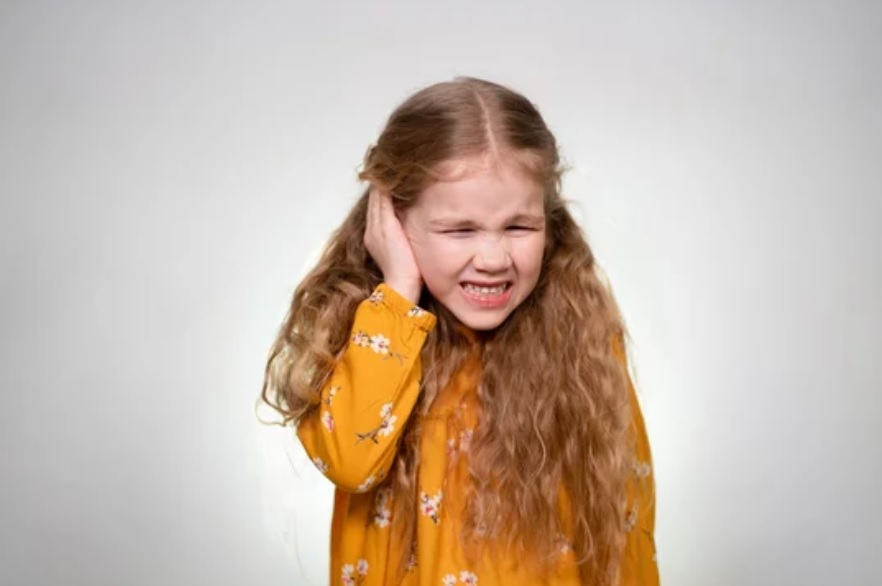INTRODUCTION:-
Most of us have experienced this at least once in our life, where we feel like our ear is blocked, making random sounds and causing a weird sense of irritation.
Exactly the same also happens in children. But as a matter of fact, they are more intolerant towards it.
This, though an ear blockage will gradually go away on its own, we tend to go for some home remedies or medicines that would give them instant relief.
SYMPTOMS
- Runny nose
- Coughing
- Sneezing
- Sore throat
- Ear pain
- Redness
- Fluid drainage
- Fever
- Headache
- Nausea
- Shortness of breath
- Ringing sound in the ear
- Dizziness
- Hearing problem
CAUSES
The reason for ear blockage could be –
1) Eustachian tube blockage
- The eustachian tube is the one that connects our inner ear to the throat.
- Apart from maintaining air pressure across the ear and creating balance in the body, it also acts as a pipeline to transport the mucus fluids from the nose and other cellular debris into the throat.
- But in certain cases, when it fails to do so, the mucus gets trapped in the Eustachian tube itself, causing a blockage in the inner ear.
- This mucus further turns out to become home to many bacteria that cause the common cold, influenza, sinusitis, etc.
- It is very important to remove this blockage at the earliest; otherwise, the bacteria will spread to the other ear and infect them.
2) Another reason that can cause Eustachian tube blockage is the practice of swimming. Some water that enters the ears while swimming tends to get trapped there.
3) Higher altitudes
The ear is used to have a certain air pressure at ground level, which is maintained by the Eustachian tube.
On a change in altitude (above or below ground level), the air pressure changes in the outside environment, which in turn disturbs the pressure inside the ear as well, causing a blockage.
Certain instants that result in a change in altitude are —- Scuba diving, Climbing a mountain, Flying up in an airplane
4) Earwax
Earwax is a moist waxy substance that is present inside the ear and helps clean the ear canal regularly.
Using earbuds to remove this ear wax is a wrong practice as it pushes the wax to the very inside of the ear where due to lack of exposure, it gets thickened to a hard mass and blocks the ear canal.
5) Acoustic neuroma
It is benign cancer that occurs at the nerve endings, the nerve present near the Eustachian tube that connects the ear to the brain.
These lumps of cancer cells grow to block the ear.
TREATMENT
1) Valsalva maneuver:-
- It is an exercise.
- Close your mouth.
- First, take a deep breath.
- Pinch your nose.
- Release the air slowly with closed lips, and a pinched nose like you are blowing up a balloon.
- Release the air slowly through the nose with your eyes closed.
- This creates an outward pressure on the inside of the ear
- Thus, the blockage is released.
2) Chewing a piece of gum or sucking candy can also help.
3) Heat or Steam:-
- Use a warm damp cloth and press it again the ear
- Steam breathing
- Taking a hot shower or steam bath.
4) Removing the trapped fluid
Or use a hair drier with a moderate temperature at the opening of the ear to dry out the fluid.
5) Over-the-counter (OTC) medicines
- They are painkillers used to get instant relief from ear pain.
- Decongestant for sinus and cold.
- Antihistamine for allergies.
Examples: ibuprofen (Motrin), acetaminophen (Tylenol), naproxen sodium (Aleve)
6) Eardrops
- They soften the earwax, which can then be removed easily.
NOTE: If you are still unable to unclog the ears, do visit a doctor for an expert supervision
THANK YOU
MEDICAL ADVICE DISCLAIMER:
This blog, including information, content, references, and opinions, is for informational purposes only.
The Author does not provide any medical advice on this platform.
Viewing, accessing, or reading this blog does not establish any doctor-patient relationship.
The information provided in this blog does not replace the services and opinions of a qualified medical professional who examines you and then prescribes medicines.
And if you have any questions of medical nature, please refer to your doctor or qualified medical personnel for evaluation and management at a clinic/hospital near you.
The content provided in this blog represents the Author’s own interpretation of research articles.
